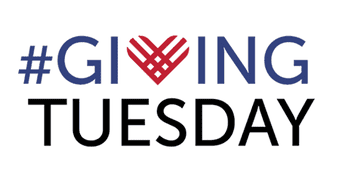
Attention high school seniors: there’s a group of important decision-makers in your life who couldn’t care less about your social media posts.
But don’t celebrate too quickly. A few weeks ago, 21 WFMJ-TV reporter Danielle Cotterman asked me if social media use could impact someone’s admission to college. It was a good question, and based in part on a story she read on CNN’s Money. What Cotterman didn’t know was that my first job was as a college admission counselor. I was part of a team that reviewed admission applications. I remember the sheer volume of applications our team reviewed each year. We looked at a bunch of data before making decisions, including the two biggies: grade point average and test scores (i.e., ACT, SAT). Snapchat and Instagram weren’t around back then. Even if they were, there was no way we’d have time to add social media snooping to the mix of factors guiding our decisions. Gary Swegan, associate vice president for enrollment planning at Youngstown State University, agrees. “With more than 1,000 applications per admissions counselor, doing that much digging is not practical, even if we were inclined to do so,” Swegan said. “This might happen at the Ivys or other highly selective institutions,” Swegan added. “But that’s about 1 percent of what really happens in (higher education).” Swegan was referring to Ivy League schools like Harvard and Yale. Their acceptance rate is about 5 percent. Each year, the National Association for College Admission Counseling publishes a report of the top factors influencing college admission decisions. Number one on the list: grades in college preparatory courses, followed by strength of curriculum, overall high school GPA, and admission test scores. The next most important factors were the essay, interests, recommendations, activities and class rank. Guess what’s not on the list? Social media. “I have never been involved in denying admission based on social media posts,” Swegan said. If you’re applying for scholarships, there’s a slight chance someone might review your social media posts. For example, if you’re one of two finalists for a big scholarship, someone might look at your posts before making a decision. This doesn’t mean you should start posting inappropriate selfies and mean-spirited posts about your part-time job. It’s that latter one that still gets most high school seniors in trouble. “I would rate (social media review) as much more prevalent amongst employers during the hiring process,” Swegan said. In fact, most Fortune 500 companies now include social media reviews when screening applicants. You might be in the clear when it comes to getting into your top school. But paying attention to your social media use now will help you in a few years, when you start applying for those all-important post-graduation jobs.
0 Comments

Giving Tuesday is Nov. 29.
You might be more familiar with other post-Thanksgiving shopping days such as Black Friday, Small Business Saturday and Cyber Monday. Last year, in the lead-up to Giving Tuesday, I wrote a column about saving some of your holiday funds from the three-day spending spree to help others in need. There’s something about this time of year that gets us thinking about those in need. Most of us have some cause that pulls at the heartstrings. Maybe it’s the homeless, the elderly, or our little furry friends. For some, end-of-year tax deductions are an important incentive for giving. In the last week, I’ve been hit with 20 or 30 email and social media messages promoting their individual charities and ways to give. According to The Chronicle of Philanthropy, donors gave more than $116 million to charity on Giving Tuesday. That’s a huge increase from previous totals. Between 2012 and 2014, nonprofit software service Blackbaud, and nonprofit crowdfunding services GlobalGiving, reported raising more than $83 million. Charitable social media users promote the day with the hashtag #GivingTuesday. Do a quick search on Twitter and you’ll find many people already talking ways they’ll be giving. Although that number, $116 million, seems like an astronomical amount of money to raise in one day, most of it comes from people making small gifts. Consider this: during 2015’s giving sprint, nearly 700,000 online donors gave more than 1 million gifts averaging a little over $100. Good to know that you don’t have to break the bank to make a difference. It’s also important to note that Giving Tuesday is about more than the amount of money you can (or can’t) give to charity. The trust is, some of us just don’t have the means to give. That $100 goes a long way to paying the bills and buying groceries. You might even give on Tuesday just by making purchases through businesses with a charitable arm. For example, Something New Florist in Canfield will donate 20 percent of the proceeds from the Shepherd Foundation’s custom-designed arrangement to support the Virtual Dementia Tour Comprehensive Program. With those funds, Shepherd of the Valley provides Virtual Dementia Tour training for caregivers, health care providers, first responders and others caring for those with dementia. Oh, and Something New Florist doesn’t just do this on Tuesday. They do this every month as part of their Blooms of Hope mission. The Shepherd Foundation just happens to be the November philanthropy. If you’re strapped for cash this holiday season, consider other ways you can give. Give some of your time to be a little more prosocial on social media:
Visit givingtuesday.org for more tips on how to give during #GivingTuesday. 
Thanks to the threat of an exploding battery, I was forced to move to the new Google Pixel XL phone.
Remember the Samsung Galaxy Note 7? It was a beautiful piece of technology. But, like many other smartphones, the Note 7 used a lithium ion. The liquid in a lithium ion battery can be flammable, so if the thin plastic shield separating the negative and positive sides breaks, boom. It’s more like a fizzle with fire and smoke, but you get the picture. Truth be told, I only had a Note because I have gigantic fingers. I saw my colleague using an earlier version of the Note, and I was immediately hooked. So, when I moved to the Pixel, I was concerned about the size of the screen. Little did I know how captivated I would become with Pixel’s functionality. If you’ve heard anything about Pixel, it’s probably related to the camera. Yes, the pictures are amazing. Crisp. Clear. But the real test came from with kids. Despite our best efforts, every new electronic device that enters our house eventually ends up in their hands. So, it wasn’t long before my Pixel became fodder for adolescent exploration. We have iPads, and they enjoy taunting Siri, Apple’s “intelligent” assistant that responds to voice commands. My kids try to one-up each other by throwing out clever, yet increasingly crude commands. “Hey Siri, do you have a boyfriend?“ “Hey Siri, what color is poop?” I’m so proud, and clearly an excellent parent. When I introduced them to the new Google Assistant, they were pretty excited. If you’re a regular reader of this column, you might recall my reflection on Google’s new AI assistant, a function of its new Allo app. Google’s AI functions are very similar to Apple’s Siri and Amazon’s Alexa. Google’s AI is activated by saying “OK Google” followed by some command. Some of the features are quite useful when you’re busy doing other things with your hands. I’m not making a reference to driving here. Of course, your attention should always be on the road and not on your phone. Nonetheless, just like Siri, it is possible to make a call or send a text without having to actually look at your device. In a short time with the new Pixel, I’ve become quite good at simple albeit useful commands: “OK Google ... ... how far away is Philadelphia from my current location?” ... will it be sunny tomorrow in Youngstown, Ohio?” Of course, these commands are of little interest to my kids. Sure, they use it for homework help, but they prefer to play. Their commands resemble a lottery. They try new combinations until they find a winner: “OK Google ... ... what am I?” ... beatbox.” ... who let the dogs out?” And then they hit the jackpot with: “OK Google, what does the fox say?” 
By the time this column appears, the election will be over.
Or, at least, I hope it’s over. Really over. It’s clear from reading our social media feeds that we all have election fatigue. This is because the campaign for president has been particularly divisive thanks, in part, to a sharp increase in social media use. Unfortunately, that increased use damaged a lot of close relationships. Family members abandoned each other, lifelong friendships are broken. In a recent Research & Politics article, Leticia Bode, assistant professor of political communication at Georgetown University, examined the end of personal relationships on social media for political reasons. “Political unfriending is most common among those who talk about politics, but importantly it is not common for any group,” Bode said. Bode’s study identified the “unfrienders” are those with strong political ideologies and those learn about politics through social media. Still, Bode noted, “there is a great deal about political unfriending that we don’t understand.” If those relationships were damaged because of the election, it’s time to reconnect. If they were damaged for other reasons, it’s time to call Dr. Phil. “We know that political views are deeply tied to and embedded in cultural values, personal relationships and communities,” said John Wihbey, assistant professor of journalism, Northeastern University. “This is true both online and off-line.” Wihbey’s work focuses on political participation and civic engagement on social media. “Often to express one’s views or change one’s mind means risking losing community ties,” Wihbey explained. “I suspect that many ties have been broken in this election. And yet we are all part of a social contract that makes us part of a society that is inherently political.” While visiting my polling place early yesterday, I was surprised to see people clearly on opposite sides of the political spectrum chatting with each other, shaking hands, smiling, even hugging. This was a stark contrast to the negativity and bitterness observed on social media over the last year. But it was also a sign that people may be ready to put this election in the past and reconnect. “We need to make space for holding differing, even seemingly irrational political views, recognizing that we are all flawed,” Wihbey said. Of course, the process of reconnecting has deep roots in U.S. culture. “There is a great tradition in American history of coming together around moments of great trial,” Wihbey said. “At a practical level, on social media we should express the things that we are grateful for as individuals still with immense personal freedom.” To begin the process, we should start by focusing on the things for which we are most thankful, like those family and friends who may have been lost in the seemingly endless election season. 
Twitter announced last week that it would eliminate Vine, the six-second, looping video application.
The decision to cut Vine sent shockwaves through the social media community, prompting protests from many Vine celebrities, or Viners. Viners have created massive audiences, some with millions of followers. For example, comedian Andrew Bachelor, better known as King Bach, is the most followed Viner, with more than 16 million followers. His videos have been looped more than 6 billion times. Comedian Brittany Furlan, once identified by Time magazine as one of the most influential people on the Internet, has nearly 10 million followers on Vine and more than 4 billion viewed loops. Both Bachelor and Furlan have large audiences on Twitter, Instagram and Facebook, but those numbers pale in comparison to their Vine followers. Now Bachelor, Furlan and other Vine celebrities are forced to shepherd their fans from Vine to other platforms to see new content. Don’t assume that’s an easy task for someone with millions of fans. The competition for viewers, fans and followers is fierce. Opinions on why Twitter is abandoning Vine run rampant on social media. First, Twitter acquired Vine more than four years ago. Two and a half years later, Twitter acquired the live-video streaming video app, Periscope. So a logical explanation would be that dumping Vine allows Twitter to turn more attention to Periscope. Second, as noted above, our attention is massively fractured. We have become multiscreen content consumers. We watch content on several different screens and platforms, and we’re becoming very good at it. Still, we can only focus on so many screens and so much content at the same time before things become literally and figuratively blurry. The NFL is learning this lesson the hard way. When the NFL started offering games on platforms other than TV, viewers dwindled. These splintered channels (some of which are available on Twitter) may be leading viewers who would otherwise be watching an NFL game to other unintended content on Twitter and other platforms. If you go to Twitter to watch an NFL game, you might get distracted by a clever cat video, and then another, and another. You get the picture. The truth is, Vine has been declining in activity and viewers for months. It was probably easier for Twitter to delete Vine and refocus on news and other features than it was to reinvest in a platform with features readily available on other apps. According to Twitter, nothing will immediately happen to Vine. The website and Vines are still available today. In a statement released last week, Twitter claims they are “going to do this the right way.” You’ll still be able to access Vines. The site will remain online because Twitter believes “it’s important to still be able to watch all the incredible Vines that have been made.” |
AuthorDr. Adam C. Earnheardt is special assistant to the provost and professor of communication in the department of communication at Youngstown State University in Youngstown, OH, USA where he also directs the graduate program in professional communication. He researches and writes on a variety of topics including communication technologies, relationships, and sports (with an emphasis on fandom). His work has appeared in Mahoning Matters as well as The Vindicator and Tribune-Chronicle newspapers. CategoriesArchives
July 2023
|
 RSS Feed
RSS Feed